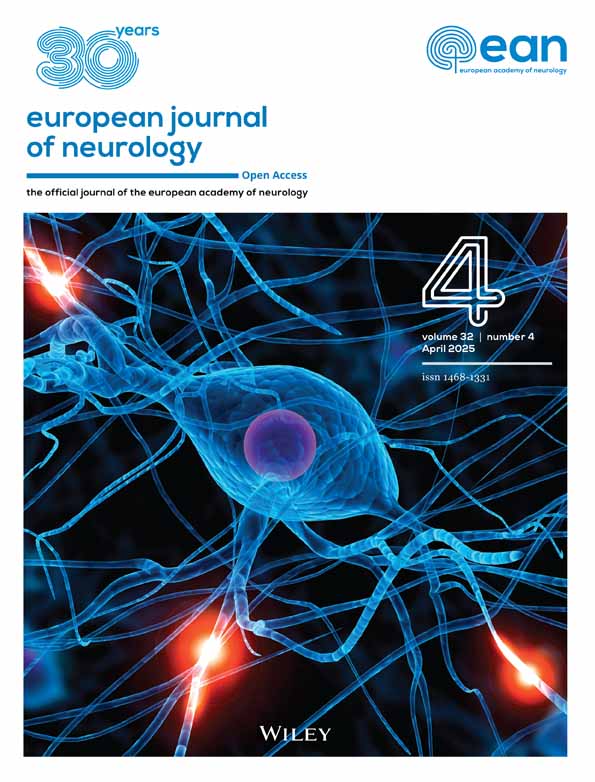Comment on: Associations of Inflammatory Markers With Neurological Dysfunction and Prognosis in Patients With Progressive Stroke
Funding: The authors received no specific funding for this work.
Progressive stroke, a subtype of acute ischaemic stroke, remains a critical challenge in clinical practice due to its high morbidity and poor prognosis. Inflammatory mechanisms play a central role in its pathophysiology, making inflammatory biomarkers a potential way to predict and manage disease progression [1]. We read with great interest the recent study investigating the association between inflammatory markers and the prognosis of progressive stroke in patients with acute ischaemic stroke. The study provides valuable insights into the predictive value of systemic inflammatory indices, such as neutrophil-to-lymphocyte ratio, lymphocyte-to-monocyte ratio, systemic inflammation index and pan-immune inflammation score, in assessing neurological deterioration [2]. However, several methodological and interpretative issues warrant further investigation to increase the robustness and clinical relevance of these findings.
First, although the study defines progressive stroke based on an increase of ≥ 2 points on the National Institutes of Health Stroke Scale within 7 days of acute ischaemic stroke onset, this does not account for the natural variability in scoring. Neurological symptoms in stroke patients can fluctuate due to multiple factors, including haemodynamic changes, metabolic disturbances and interobserver variability in assessment. The study does not clarify how repeated assessments were standardised or whether multiple assessors were involved, which raises concerns about the reproducibility of the progressive stroke classification. In addition, the study does not examine the time course of score changes—whether neurological deterioration occurs abruptly or progressively over several days. Understanding the temporal pattern of deterioration could help to distinguish inflammation-driven progression from other mechanisms, such as secondary infarct expansion or vascular complications.
Second, although the study shows associations between inflammatory markers and stroke progression, it does not take into account confounding factors that may independently influence both inflammation and stroke progression. For example, comorbid infections, including stroke-associated pneumonia, may increase inflammatory indices, confounding their relationship with stroke progression. In addition, the study excludes patients with recent infections but does not provide details of subclinical infections or inflammatory conditions, which may have biased the results. The lack of adjustment for baseline stroke severity using established stroke scales beyond the National Institutes of Health Stroke Scale, such as the Alberta Stroke Program Early CT Score for infarct volume assessment, also limits interpretation, as patients with larger infarcts are inherently more likely to experience neurological deterioration.
Third, the statistical approach used in the study raises several concerns. Although univariate and multivariate logistic regression analyses were performed, the selection criteria for the variables included in the multivariate model are not well justified. The authors do not report whether they tested for collinearity between inflammatory markers, which could inflate the significance of certain predictors. In addition, the study reports odds ratios without clear consideration of their clinical effect size—although some associations are statistically significant, their real-world predictive utility remains unclear. Receiver operating characteristic curve analysis, although useful, lacks external validation, making it difficult to assess whether these markers would perform similarly in different patient populations with different demographic and clinical characteristics.
Fourth, the study suggests that the lymphocyte-to-monocyte ratio and the National Institutes of Health Stroke Scale are independent predictors of stroke outcome, but does not explore the biological plausibility of this finding. The lymphocyte-to-monocyte ratio, a marker of immune balance, has been associated with several inflammatory diseases, but its role in stroke pathophysiology remains poorly understood. Does a low ratio indicate a suppressed immune response that predisposes patients to secondary complications, or does it simply reflect the severity of tissue damage? The study does not examine dynamic changes in inflammatory markers over time, which could provide crucial insights into whether these markers are causal or merely reactive indicators of stroke progression.
Finally, although the authors suggest that inflammatory markers may serve as convenient clinical predictors, the study does not address how they compare with established clinical prediction models for stroke progression. Would the inclusion of inflammatory markers improve existing prognostic models such as the iScore or ASTRAL score? In addition, the study does not discuss whether modifying inflammation through pharmacological or non-pharmacological interventions, such as targeted anti-inflammatory therapy or rehabilitation strategies, could reduce the risk of stroke progression.
In conclusion, although this study provides valuable data on the relationship between inflammatory markers and stroke progression, several methodological, statistical and interpretative limitations should be addressed in future research. A more nuanced understanding of the temporal evolution of inflammation, rigorous adjustment for confounders and external validation in diverse cohorts would greatly enhance the translational value of these findings for clinical practice.
Author Contributions
Xinmin Zhao: investigation, writing – original draft. Weixin Zhang: writing – review and editing, methodology, conceptualization, project administration, supervision.
Ethics Statement
The authors have nothing to report.
Consent
The authors have nothing to report.
Conflicts of Interest
The authors declare no conflicts of interest.
Open Research
Data Availability Statement
The datasets used and/or analysed during the current study are available from the corresponding author on reasonable request.




